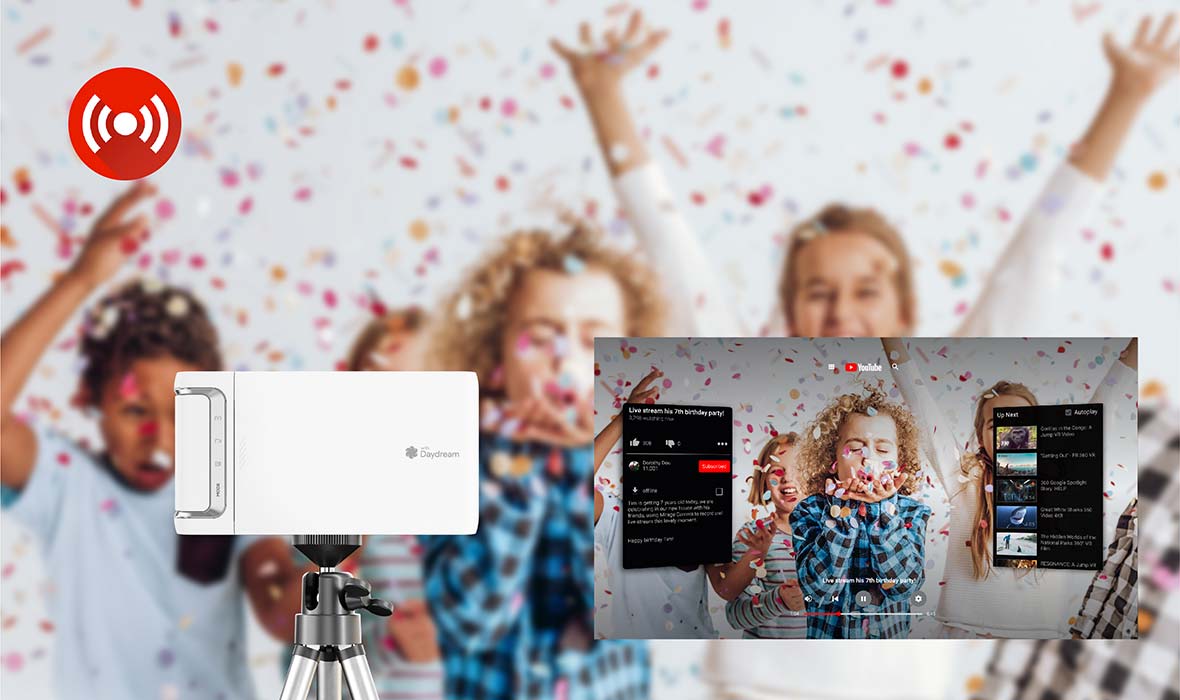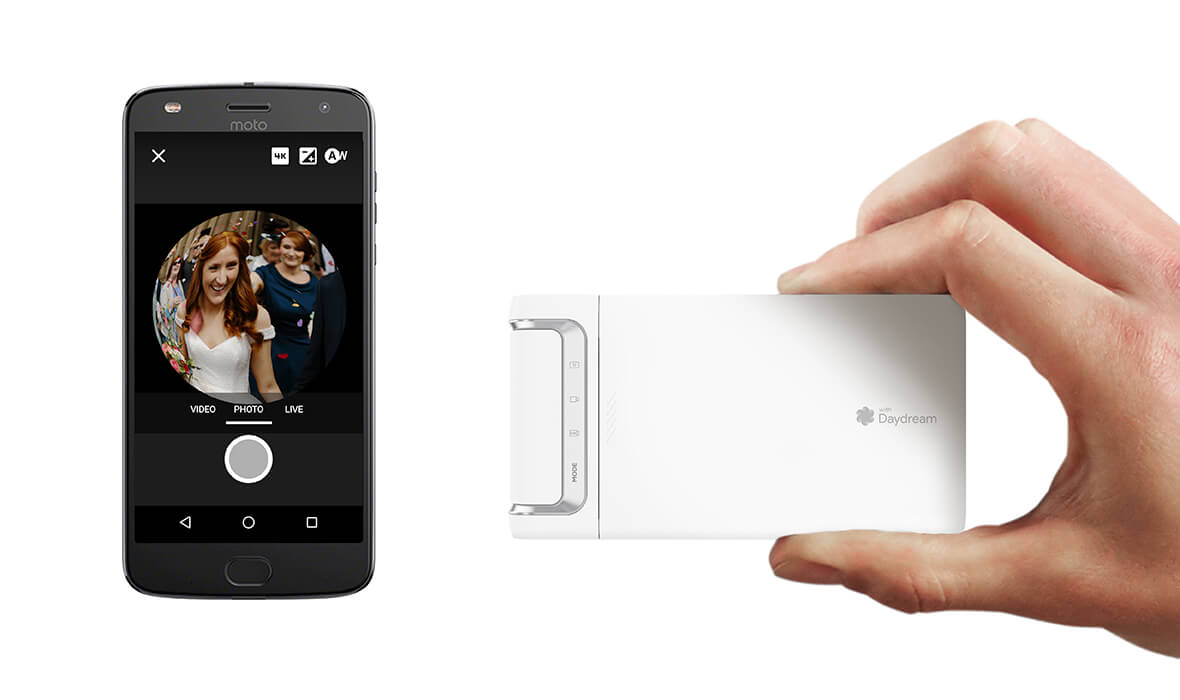Lenovo and Google collaborated to create the Lenovo Mirage Solo VR headset for $399 and the Lenovo Mirage Camera for $299. Both are now available.
Google and Lenovo are working together to launch the “Lenovo Mirage Solo” VR headset (based on Google’s VR platform Daydream), and the “Lenovo Mirage Camera” (also running on Daydream).
Last week, Lenovo’s Mirage Camera hit the market. It costs $299 and is the first VR180 camera on the market. VR180 cameras capture photos in 3D, but can be viewed and shared in either 2D or 3D. This camera also enables users to capture VR videos in 180 degrees.
To use the camera, you don’t have to own the Mirage Solo headset – although Lenovo claims those with the headset will benefit most. The camera is a point-and-shoot device with two lenses and just three buttons.
Google’s AR and VR head Clay Bavor, explains: “People pick up a 360 camera and ask, ‘Where do I point it?’ And you tell them ‘You don’t have to point at anything,’ and then they’re confused.”
The VR180 format was created by Daydream and YouTube. With the camera, point and shoot for 3D and 4K resolution images. The idea is that you can then watch it back on the Lenovo Mirage Solo headset. However, it can also sync 180-degree pictures and video with your phone.
Essentially, the aim of the products is to simplify the VR experience making it easy to quickly set-up, record and share VR video. Lenovo’s website states: “Mirage Camera is the simplest way to capture life’s special moments in virtual reality video and photos – everything you see, it sees so you can relive life later as if you were in a time capsule.”

Share Your Life and Shoot a Time Capsule with the Lenovo Mirage Camera
Supposedly, using the camera is so easy you’ll have no trouble teaching your grandma how to use it. Lenovo adds: “Livestreaming with the Lenovo Mirage Camera fuses the immersive nature of stereoscopic 3D with a 180-degree field of view. You can stream these live moments in either 4K, 1440p, or 1080p (depending on your WiFi bandwidth).”
The VR180 format integrates with YouTube and Google Photos. Point, shoot, then pair the camera with your smartphone via Wi-Fi Direct and Google’s VR180 app so that your phone’s screen becomes your viewfinder.
Finally, the camera is lightweight and easy to carry. It is just 4 inches long (105 mm) and 2 inches (55 mm) tall. It also weighs less than five ounces (139 grams). The camera has a removable battery which charges via USB-C and lasts for two hours.
Of course, if you have the money, you could also spend $399 on the Mirage Solo with Daydream. This headset enables you to seamlessly view your captured content. Find out more by visiting the Lenovo website.

License: The text of "Lenovo’s $300 VR-Camera “Mirage” is Available Now" by All3DP is licensed under a Creative Commons Attribution 4.0 International License.